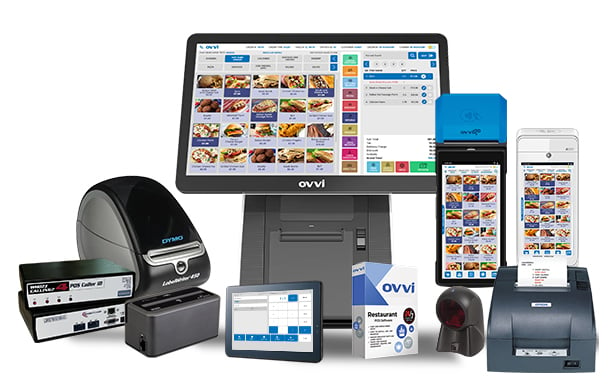Exactly How POS System Functions: A Comprehensive Guide for Entrepreneur
Understanding the Parts of a POS System

Just How Sales Deals Are Refined
When a customer determines to purchase, the sales purchase initiates a series of organized steps within the POS system. Initially, the cashier inputs the things being acquired, which are scanned via a barcode reader or manually gone into. This action gets item information, including prices and appropriate taxes, from the system's database.Next, the client exists with the complete quantity due. The POS system after that refines the payment, whether with cash money, bank card, or mobile repayment methods (Restaurant POS Software). For electronic repayments, the POS firmly interacts with settlement cpus to license and verify the transaction.Once the repayment is confirmed, the system generates a receipt, which can be published or sent out electronically. This receipt works as proof of purchase for the customer. The transaction data is recorded in the system, making certain accurate sales records and economic monitoring for the company.
Stock Administration and Tracking

Efficient stock management and monitoring are crucial elements of a POS system, as they assure that organizations preserve suitable supply levels and decrease inconsistencies. A robust POS system enables for real-time inventory updates, showing sales and returns instantaneously. This makes it possible for service owners to check supply levels precisely, ensuring that preferred products are conveniently available while stopping overstocking of much less prominent products.Additionally, progressed POS systems offer features such as computerized stock informs and reorder recommendations, improving the purchase procedure. Barcoding and RFID innovation boost precision in tracking supply movement, minimizing human mistake. Substantial coverage devices supply insights into stock turn over prices, assisting organizations make informed decisions concerning buying and item offerings. Eventually, efficient supply administration via a POS system not only improves operational performance but also improves client fulfillment by making certain item availability.
Evaluating Consumer Information and Insights
Consumer information analysis offers as a powerful device for services utilizing a POS system (Restaurant POS Software). By analyzing and accumulating transaction information, businesses can discover beneficial understandings concerning customer habits and preferences. This analysis allows them to identify purchasing fads, peak shopping times, and preferred items, thereby notifying inventory choices and advertising and marketing strategies.Additionally, services can sector their client base, enabling personalized advertising efforts that cater to specific demographics or acquiring habits. Understanding consumer loyalty patterns likewise assists in establishing targeted incentives and promos programs.The data amassed from a POS system can likewise reveal understandings into customer feedback, enabling organizations to make enlightened choices regarding product offerings and solution improvements. Inevitably, leveraging client information efficiently can enhance the general purchasing experience, foster client complete satisfaction, and drive earnings growth
Advantages of Executing a POS System

Regularly Asked Concerns
What Types of Companies Can Take Advantage Of a POS System?
Different companies benefit from a POS system, consisting of retailers, restaurants, hair salons, and shopping platforms. These systems enhance deals, inventory monitoring, and client data, improving functional effectiveness and improving customer experience throughout varied industries.
Just how much Does a POS System Generally Cost?
The price of a POS system commonly ranges from a few hundred to several thousand bucks, depending upon features, equipment, and software program. Services should take into consideration recurring costs for maintenance, purchase, and support handling when budgeting.
Can I Incorporate a POS System With Existing Software?
Incorporating a POS system with existing software is often feasible. Several systems offer APIs or built-in compatibility features, enabling businesses to enhance procedures and improve capability helpful resources by attaching different software applications properly.
What Training Is Required for Team to Make Use Of a POS System?
Educating for team to use a POS system commonly consists of understanding software program functionalities, refining deals, taking care of inventory, and handling client interactions. Practical presentations and hands-on practice sessions improve efficiency and self-confidence in making use of the system successfully.
What Occurs if the Internet Decreases While Utilizing a POS System?
If the web goes down throughout POS system usage, purchases from this source might be disrupted. Several systems provide offline capabilities, enabling fundamental procedures to proceed, yet complete capability, consisting of real-time inventory updates, will certainly be restricted. A Factor of Sale (POS) system is composed of several vital components that function with each other to promote transactions and take care of service procedures. Effective supply monitoring and monitoring are vital parts of a POS system, as they ensure that businesses keep optimal stock levels and decrease disparities. Client information evaluation offers as a powerful device for organizations using a POS system. Recognizing customer loyalty patterns likewise aids in developing targeted promotions and incentives programs.The information gleaned from a POS system can likewise disclose insights into consumer responses, making it possible for services to make enlightened choices regarding product offerings and service improvements. Implementing a POS system supplies many blog here advantages that can significantly enhance company procedures.